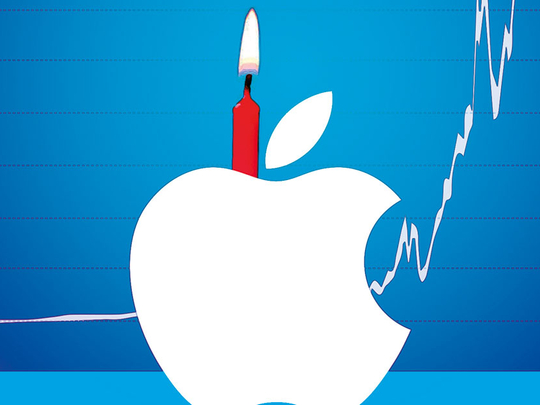
Thirty-seven years ago, Apple Inc. went public, raising a little over $100 million by selling its stock for $22 a share (40 cents on a split-adjusted basis). The sale was as eagerly anticipated as any initial public offering, including those of other tech innovators like Netscape, Google or Facebook.
Some 40 Apple employees became instant millionaires, starting with Steve Jobs, who was suddenly worth $217 million.
Apple has since gone on to do many amazing things, and for at least the last decade it has also been an amazing stock, with a market capitalisation that last month topped $900 billion, an astounding figure. So it’s not a big surprise that when I did a Google search of “Apple” and “IPO”, the first handful of links calculated how rich you would be if you had bought the stock at the IPO price.
The numbers are dazzling. An article in “Fortune” celebrating the 35th anniversary of the IPO noted that 100 shares purchased in 1980 would have been worth $632,800 by 2015 — not including dividends — for a gain of 28,663 per cent. That was vastly better than not only the S&P 500, but even Warren Buffett’s Berkshire Hathaway, which would have turned a $2,200 investment into “only” $167,200 during the same time period.
More recently, Investopia calculated that if you had invested $990 in the Apple IPO, that stock would have been worth $394,000 in November 2017, dividends included.
Stories like these do have a serious subtext: Investing requires foresight, savvy, and a willingness to invest for the long haul. These stories implicitly rebuke us for lacking those qualities, which is why most of us don’t get rich on our investments.
All of which is true enough, but none of which is illustrated by Apple’s performance, either as a company or as a stock. I seriously doubt that anyone who bought Apple stock in the early 1980s held onto it, and that included Steve Jobs, who sold every share but one when he walked out of Apple in 1985. (He kept one share so he could still get the annual report and attend shareholder meetings.)
Why would they? To have held Apple stock, an investor would have had to be willing to stomach internal divisions, failed products (remember Lisa?), the ouster of its founder, forgettable management (Gil Amelio, anyone?), and declining market share in its one and only product, the MacIntosh computer, which sank to the low single digits once the Windows operating system became dominant.
The stock, which had risen to $1.12 a share (again, split-adjusted) after the IPO, sank to 27 cents when Jobs left. And things didn’t get much better from there. Apple went through three chief executives (John Sculley, Michael Spindler and Amelio), made a raft of business mistakes, like licensing its operating system, and produced computers that fell further and further behind Windows machines.
Meanwhile, Jobs was making an absolute hash out of the company he had formed after leaving Apple, NeXT. He produced a computer that was vastly too expensive for the education market it was intended to serve.
He burnt through people, and obsessed about the colour of the walls for the NeXT factory while failing to take into account what manufacturing in America would do to the computer’s costs.
Who could have predicted that when Jobs returned to Apple in 1997, he would have acquired the management chops to run a multibillion dollar company? Who could have foreseen that he would move Apple from a computer company to a consumer electronics company, making hand-held products that people the world over lusted after?
Who would have guessed that after accepting a $150 million lifeline from arch-enemy Microsoft, Apple would one day be the larger and more important of the two companies?
Nobody, that’s who. In fact, Apple’s stock hit a 12-year low just a few months after Jobs returned (but before the board fired Amelio). Although Apple had success with Jobs’s first product after returning — the iMac in 1998 — it wasn’t until he introduced the iPod in the fall of 2001 that you could begin to see the shape of the modern Apple.
In other words, you would have to hold onto the stock for more than two decades before it became clear that Apple was going to be a successful company. Even then, you would have had to wait another three years before the stock really started to take off.
Even Buffett isn’t that patient.
To me the moral of the story isn’t that anyone who bought Apple stock at the IPO price and has held it ever since was shrewder or more foresighted than the rest of us. No, it’s that he or she was luckier.












